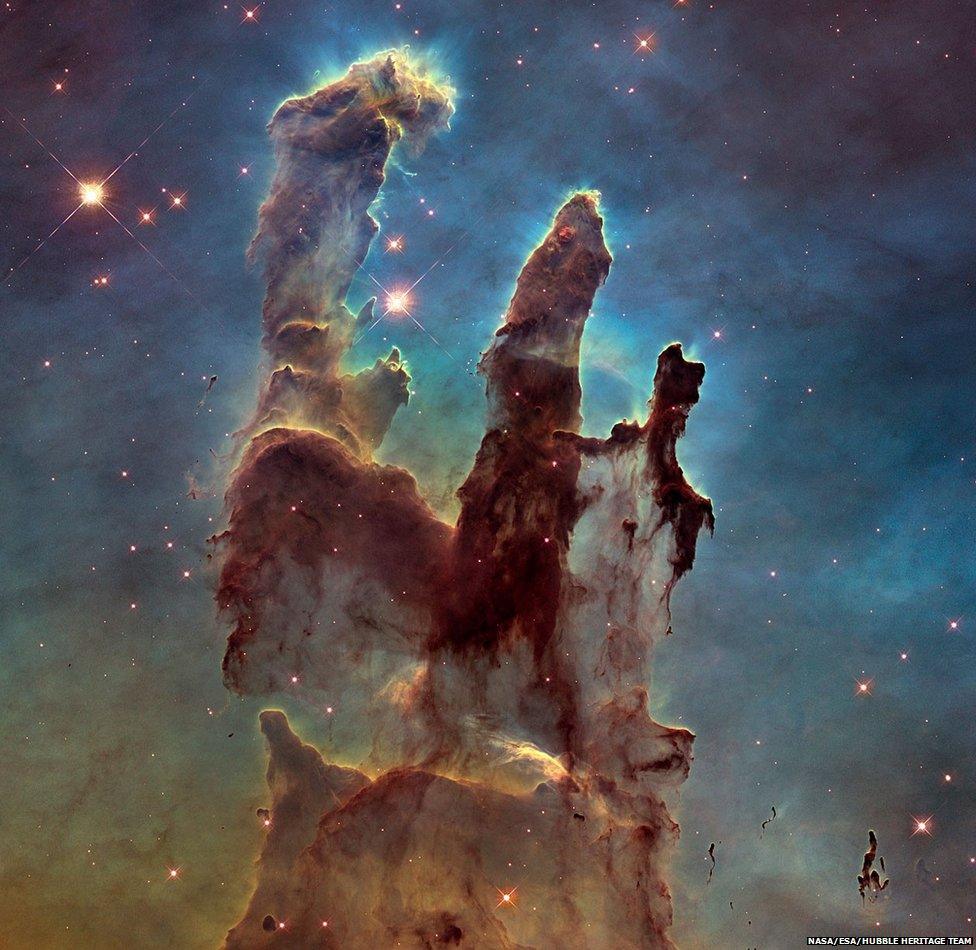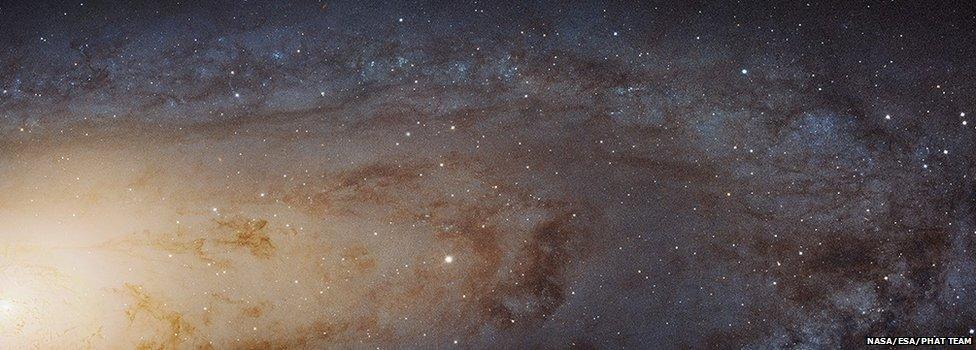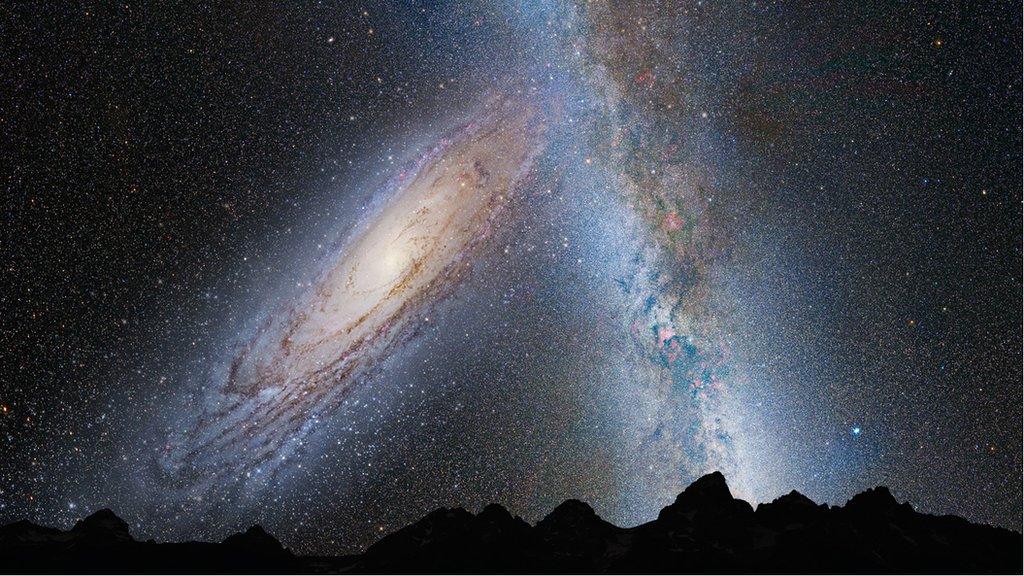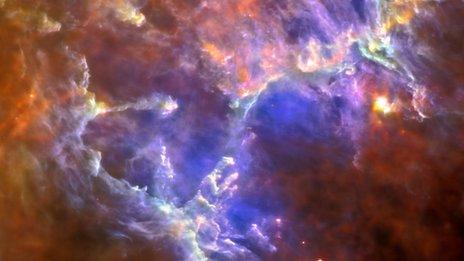Hubble returns to 'old friends' for 25th anniversary
- Published

Being 7,000 light-years away, we see the pillars as they were. If you could go there instantly now, they would have changed beyond recognition, even disappeared
The Hubble Space Telescope, which in 2015 completes 25 years in orbit, has gathered dramatic new views of two well-known celestial objects.
Revisiting one of its earliest and most famous photos, a new view of the Eagle Nebula shows its "Pillars of Creation" in more detail than ever before.
And a composite of 13,000 shots of our neighbouring Andromeda Galaxy becomes the telescope's biggest ever image.
Both were unveiled in Seattle at an American Astronomical Society meeting, external.
Showing journalists the Eagle Nebula view, together with another image of infra-red light from the same region, Dr Paul Scowen from Arizona State University described them as "new pictures of an old friend".
The original 1995 view of the star-forming pillars of billowing dust and gas was a sensation, and has since appeared on countless book covers, movie screens and T-shirts.
The new representation, thanks to multiple upgrades to Hubble's systems, has a wider angle and twice the resolution.
It also allows astronomers like Dr Scowen to see what has changed in 20 years - even though any changes actually took place 7,000 years ago because of the intervening distance.
Although he and his colleagues have only been able to look at the pictures for a few weeks, Dr Scowen noted that, "yes, some things have moved" - including the tips of jets bursting from the side of the five light-year-tall pillars.
Those jets become "signposts, pointing to where stars were made" he said.
The second impressive new release is known as the Panchromatic Hubble Andromeda Treasury or PHAT.
It depicts the Andromeda Galaxy, our Milky Way's big neighbour, at a record-breaking level of detail.
Prof Julianne Dalcanton from the University of Washington explained that Andromeda was probably bigger than the Milky Way, and takes up more of the sky than the Moon.
It took 39 months to acquire the thousands of images, in three different wavelengths of light, which together show a large sweep of the pancake-shaped galaxy some two million light-years away.
Importantly, they have sharp enough resolution to individually resolve many of the 100 million stars captured within the view.
"The picture looks pretty nice, but the glory of it is being able to zoom in," Prof Dalcanton said.
As well as individual stars, the vast image promises a treasure trove of dust clouds, star clusters, star-forming regions and more - for astronomers to mine for insights into how galaxies form and change.

Two million light-years away, but getting closer. The Andromeda Galaxy and our own Milky Way are likely to merge in about four billion years' time
- Published31 May 2012

- Published10 October 2011
- Published17 January 2012
